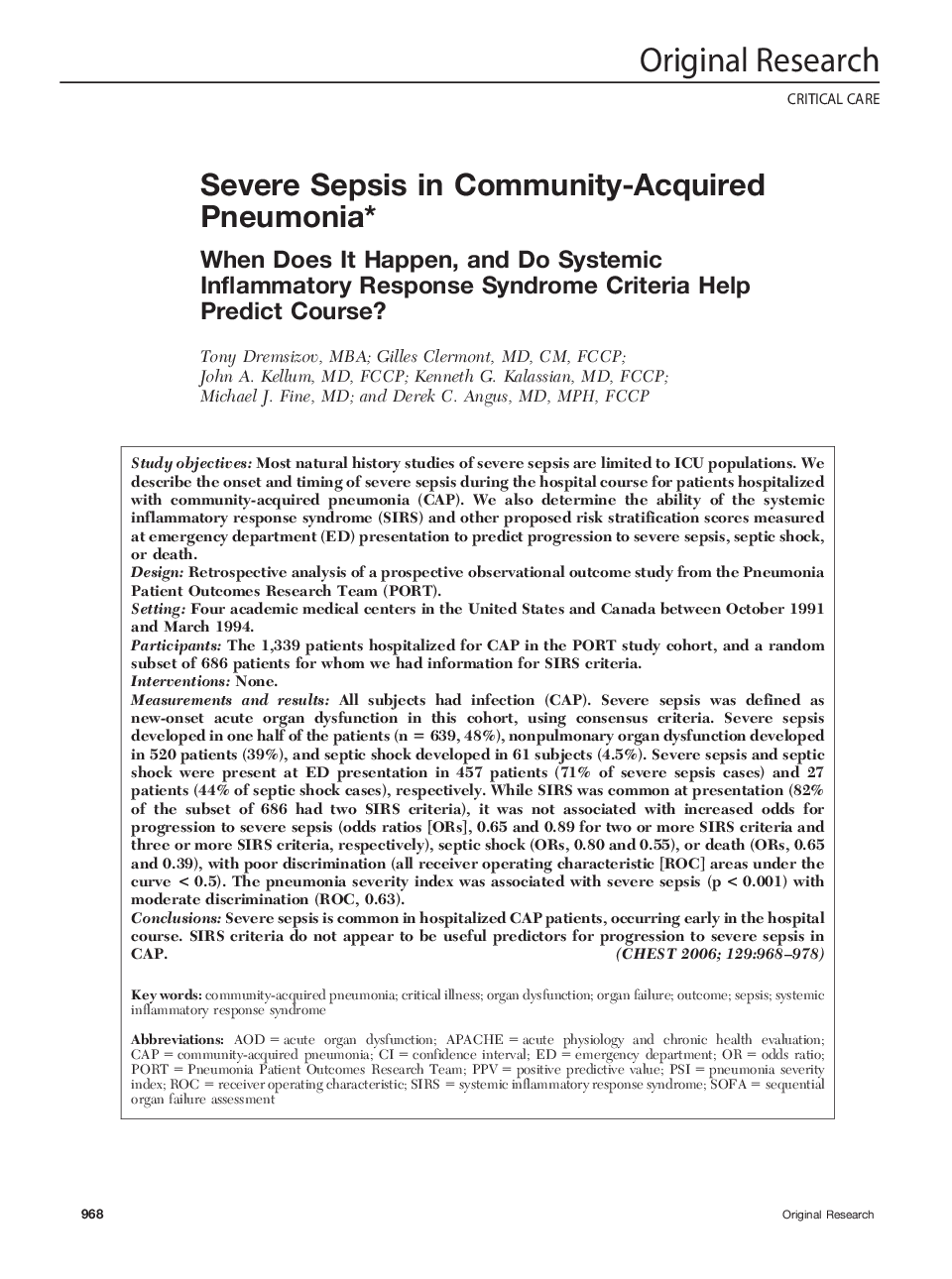| کد مقاله | کد نشریه | سال انتشار | مقاله انگلیسی | نسخه تمام متن |
|---|---|---|---|---|
| 2905594 | 1173431 | 2006 | 11 صفحه PDF | دانلود رایگان |

Study objectivesMost natural history studies of severe sepsis are limited to ICU populations. We describe the onset and timing of severe sepsis during the hospital course for patients hospitalized with community-acquired pneumonia (CAP). We also determine the ability of the systemic inflammatory response syndrome (SIRS) and other proposed risk stratification scores measured at emergency department (ED) presentation to predict progression to severe sepsis, septic shock, or death.DesignRetrospective analysis of a prospective observational outcome study from the Pneumonia Patient Outcomes Research Team (PORT).SettingFour academic medical centers in the United States and Canada between October 1991 and March 1994.ParticipantsThe 1,339 patients hospitalized for CAP in the PORT study cohort, and a random subset of 686 patients for whom we had information for SIRS criteria.InterventionsNone.Measurements and resultsAll subjects had infection (CAP). Severe sepsis was defined as new-onset acute organ dysfunction in this cohort, using consensus criteria. Severe sepsis developed in one half of the patients (n = 639, 48%), nonpulmonary organ dysfunction developed in 520 patients (39%), and septic shock developed in 61 subjects (4.5%). Severe sepsis and septic shock were present at ED presentation in 457 patients (71% of severe sepsis cases) and 27 patients (44% of septic shock cases), respectively. While SIRS was common at presentation (82% of the subset of 686 had two SIRS criteria), it was not associated with increased odds for progression to severe sepsis (odds ratios [ORs], 0.65 and 0.89 for two or more SIRS criteria and three or more SIRS criteria, respectively), septic shock (ORs, 0.80 and 0.55), or death (ORs, 0.65 and 0.39), with poor discrimination (all receiver operating characteristic [ROC] areas under the curve < 0.5). The pneumonia severity index was associated with severe sepsis (p < 0.001) with moderate discrimination (ROC, 0.63).ConclusionsSevere sepsis is common in hospitalized CAP patients, occurring early in the hospital course. SIRS criteria do not appear to be useful predictors for progression to severe sepsis in CAP.
Journal: Chest - Volume 129, Issue 4, April 2006, Pages 968–978